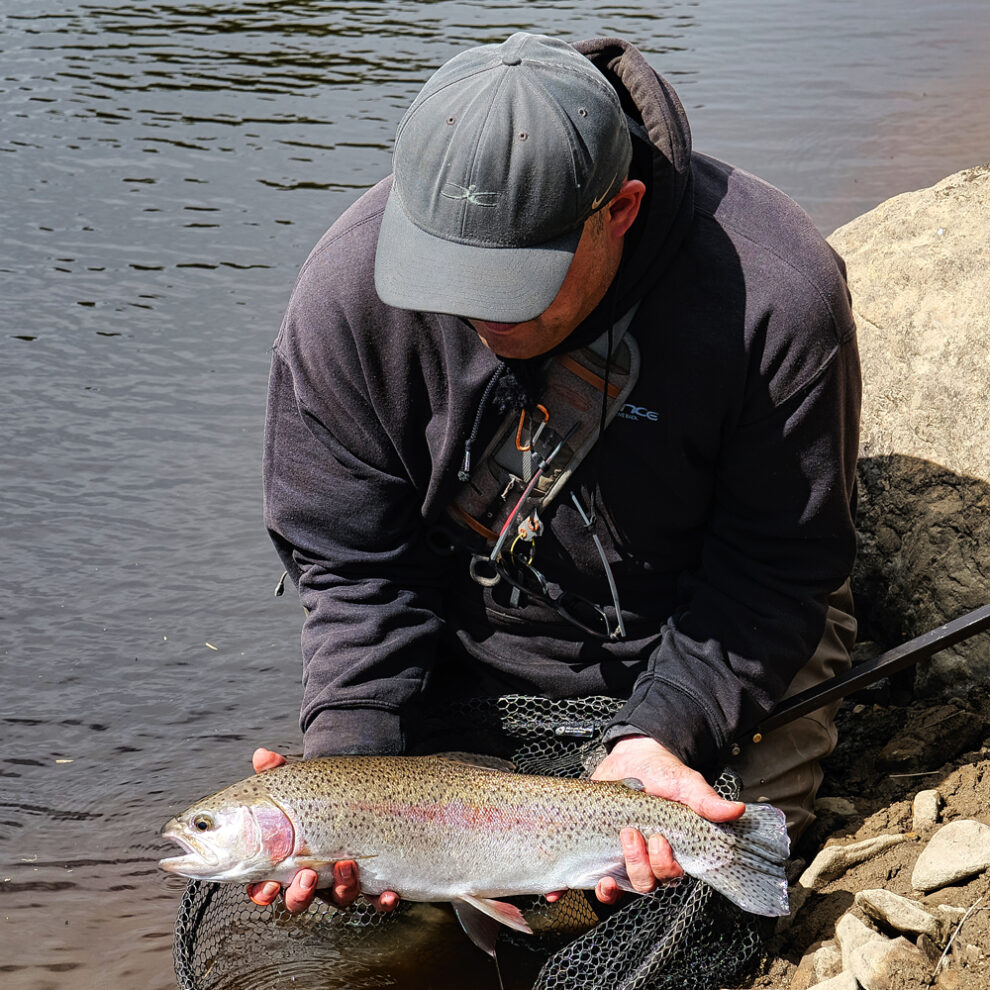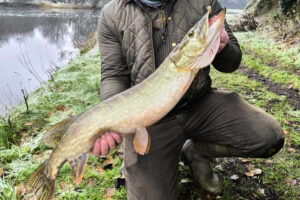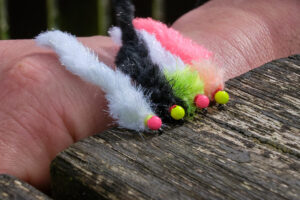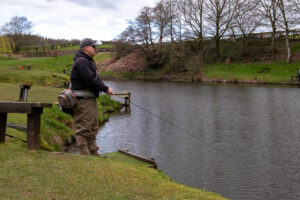July and August are surely the worst two months for stillwater trout fishing? The water can warm up to uncomfortable levels, oxygen levels are lower, and life for the trout must rank fairly low down the comparison charts compared to other UK fish species.
It’s a pretty sombre start to a write-up on fly-fishing stillwaters in summer.
During many a heatwave, fishery car park conversations often talk about disappearances of fish en-masse. Even implications, some places may not have been so generous on the latest fish stocking. But the cold hard truth is more to do with fish being cold-blooded – a deceptive term in this case. They take on the temperature of their surroundings in the most basic terms.
Being warm-blooded, humans maintain a steady core temperature by spending calories on pretty clever internal jiggery-pokery. The variation between hypothermic and overheating like a 1980s car is about one degree. Fish don’t have these calories to spend, so in exchange they become even more lethargic than us. Or completely switch off, as we’d call it in fishing.
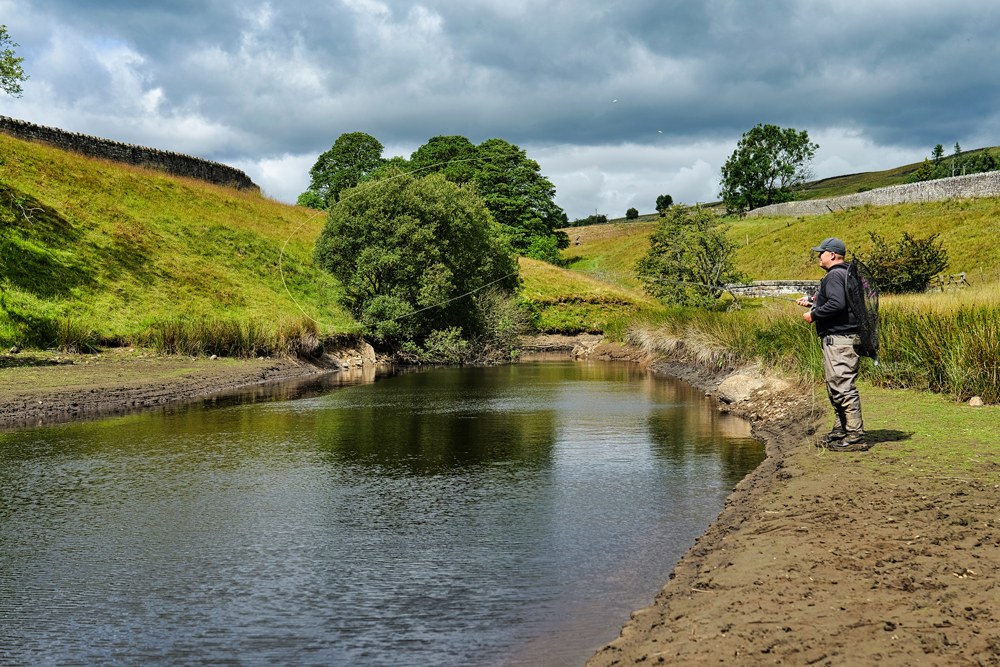
If we start to overheat, we adjust our behaviour slightly. We are maybe a little less active, more drawn to shade and eat slightly differently. It’s a generalisation, but you get the idea. Imagine having your temperature go up 12 degrees in a couple of days? Your behaviour is bound to change.
Taking all this into account certainly influences how I would approach a session in summer, therefore. Especially in the middle of the day. Life continues for the fish, but habits change almost overnight.
First things first – in extremes of heat like the 2022 heat blast, just don’t fish. In the highly unlikely event you hook anything, you aren’t doing the fish any favours and should probably stay at home.
What follows assumes standard summer conditions.
In most situations throughout the year, I find it best to look to where the wind is blowing. But in hot weather there are two main lines of enquiry I would follow first.
1) Where are the inlets into the lake?
2) Where is the deep water?
Fishing Inlets
Inlets can take the form of a trickle, a full on stream, a pipe from another lake, a water pump or an underground spring. They can often be hidden. The chances are this water has been underground and out of the sun, also moving. Colder, moving water will pick up more oxygen than the lake it is flowing into.
No matter how pathetic and almost dried out an inlet may be, it will still influence the temperature of the lake in that area, and a surprising amount of distance from it. It might be a tiny change in temperature of fractions of a degree in the lake itself, but the fish will sense it from hundreds of yards away, and most likely be drawn towards it.
Which is the long way round of saying fish near an inlet. Or fish where the inlet water will flow out to. Which is probably a little further than you’d imagine. Best to think of a glass of muddy water. If you poured lots of those in over a day, the cloud will slowly spread a fair way from where you poured it. The temperature effect will be doing the same thing. You aren’t necessarily aiming to fish the immediate few yards of the inlet. It’s where it drops off, maybe 5 to 20 yards from the inlet you should focus on initially. It might not get you a fish every five casts, but it’s a step towards hope, and hope on a hot, sunny day is in short supply.
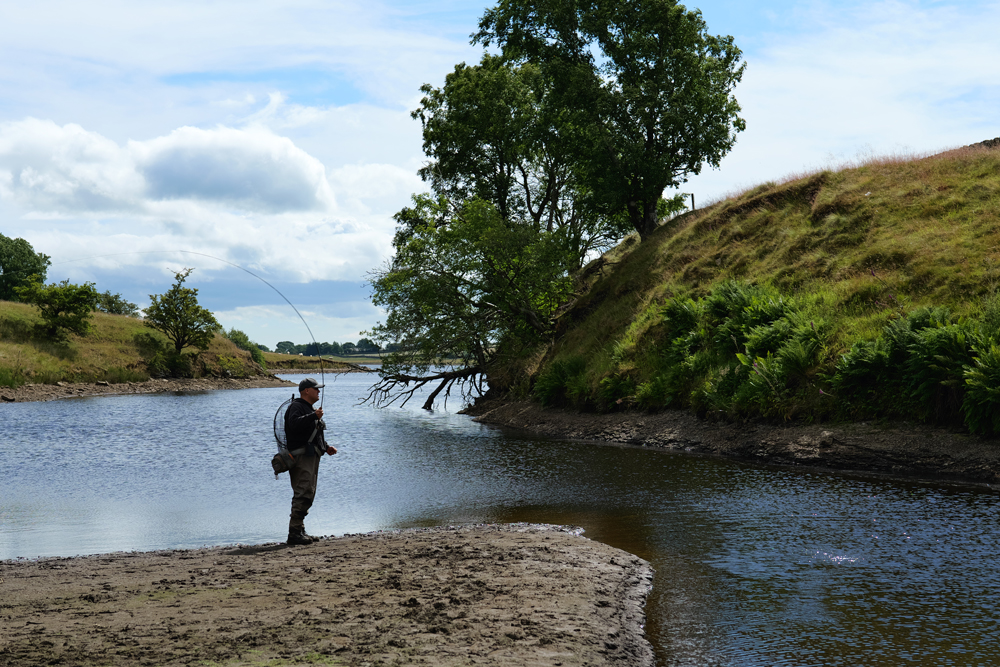
Fishing Deep Water
I’m a bit lost off with all the science about thermoclines, warm water floating, cold water sinking and then wind mixing buggering it all up. It is a world of confusion, so I’ve simply taken to looking for fish in deep water first off. They’re not always there, but often are. This seems likely to be the most comfortable place for trout in my pea brain. Which means knowing where that is. It is not always obvious. So you have to put some effort in to find where the deeper spots are.
The most obvious is asking at the fishery lodge. The second most obvious is put some polaroids on and look. The third most obvious is to use an indicator and overweighted fly to feel your way around. The additional weight on the fly should be enough to pull the indicator under if it doesn’t hit bottom. By gradually altering the distance between indicator and fly, you’ll find the depths around the edges easily enough.
The other alternative is simply go to a fishery that is known for having deep water close in. As I’m mostly fishing in the North East of England, Chatton Trout Fishery is superb for this. Dunnydeer and Chatton Lakes especially have 9ft depths one rod length from the bank in most spots, and up to 13ft in a couple of cases. There are drop-offs I’ve found further out and while these are generally a key to success, it sometimes takes a little while to find the fish. They can be huddled up like koala bears in a small area of that drop off, especially in hot weather.
So, how to fish once you have your deep water? Everything I’m about to say will have contradictions, as there are no 100% bombproof rules here. This is simply my opinion. Many anglers think differently to this and catch plenty of fish.
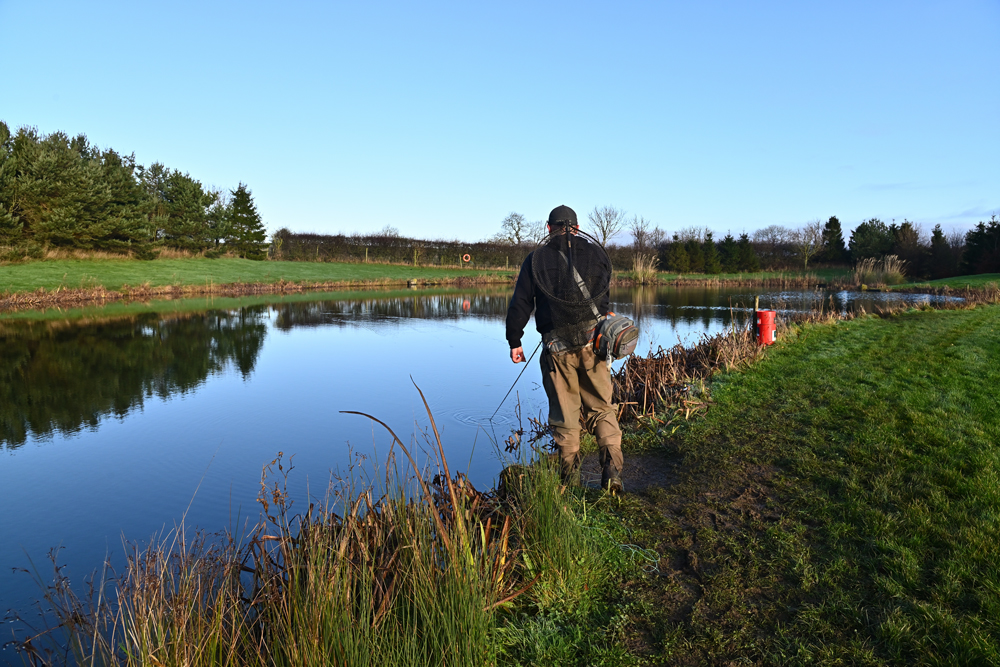
The first thing I tend to settle my mind on is that warmer water makes the fish less inclined to chase. So fish your fly static – or very slowly. If you have the added killer of a flat calm surface, the indicator must be the top dog here. You can drop the fly down to where the fish are and leave it there. I assume near the bottom until proven otherwise on the day, and you can put tiny movements into the fly without moving it more than half an inch.
Often a fly that is just pulsing and giving the impression of life is good enough. It doesn’t need to be jet-propelled.
It is also important to fish delicate. Fishing with a floating toffee apple will make fish feel the resistance above and reject the fly before you know they were there. It is like us trying to pull a big balloon under, like for like. At the end of the day, they aren’t that bothered about eating in the heat and will happily let go. So use much smaller indicators.
You can also use sinking lines with very slow retrieves and flies with minimal weight. Unweighted blobs, buzzers, and snakes can be good here. They don’t float, but aren’t that keen on sinking too fast either. So after letting your line sink deep, fishing one of those very slowly means it will flutter just above line level rather than sink like a stone. Sometimes weed will still catch you out, but it is better to be down where the fish are and getting occasional issues than fishing trouble free higher up and catching nothing.
There we have the two things worth trying on a summers’ day to help you get a fish or two if you aren’t already doing it.
Fish Early or Late
A far more sensible way than fishing through the heat of the day is to fish early and late instead. It doesn’t always work, as I’ve found out before when the full list of trout favourites were hatching. Sedges, caenis and olives can be everywhere without hardly a rise. Occasionally, the water at the surface is just too warm, even when the sun is going down.
But if things fall right, you can have some great dry fly-fishing near dark. Once again, there are always contradictions, but on balance I tend to focus on small dries in the summer on small waters – generally Size 18 or 20. These are tied very skinny and fished on much lighter leaders down to 3lb. While leader set-ups and structure is a separate subject in itself, the flies themselves would tend to be Shipmans, or little tiny spent style patterns with barely a hair on them. You can fish these blind with more regular casts on a shorter line, or, sit tight and wait for a fish to show you which direction it is heading, quickly dropping the fly two yards ahead.
Fishing in hot weather is rarely about catching large numbers of fish. You might have to work really hard for a couple in the heat of the day. And you’re fishing well if everyone else is blanking. It is all relative, really. But it is a nicer time of the year to be on the bank, compared to the driving wind and sleet of winter. There are some positives.

